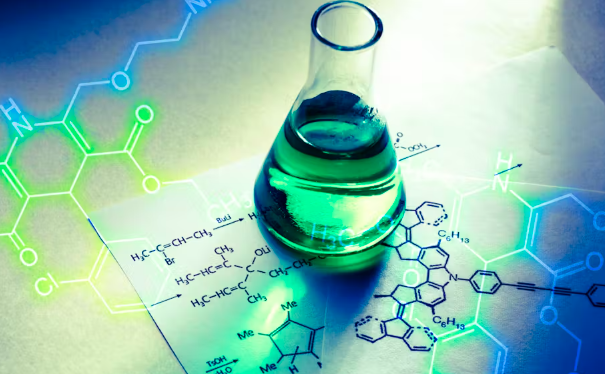Introduction
Acetatas, commonly known as acetates, are important chemical compounds with various applications across multiple industries. This comprehensive guide will delve into the nature of acetates, their uses, properties, types, and significance. We will also explore the synthesis methods and environmental impacts associated with acetatas.
What Are Acetatas?
Acetatas are salts or esters of acetic acid, a simple carboxylic acid. They consist of an acetate ion (CH₃COO⁻) and a positively charged ion. These compounds play crucial roles in both industrial and laboratory settings. The most recognized example is sodium acetate, widely used for food preservation, buffering solutions, and other applications.
Chemical Structure
The fundamental structure of an acetate consists of a carbon atom bonded to three hydrogen atoms and a negatively charged oxygen atom. The general formula for an acetate is RCOO⁻, where R represents an organic group. This structure allows acetates to participate in various chemical reactions, making them versatile compounds.
Formation of Acetatas
Acetatas can be formed through several processes:
Neutralization Reactions: When acetic acid reacts with a base, such as sodium hydroxide, it forms sodium acetate.
Esterification: When acetic acid reacts with alcohols, it can form esters known as acetates.
Uses of Acetatas
Acetatas have diverse applications, from food production to pharmaceuticals and industrial processes. Below are the primary areas where acetates are utilized.
Food Industry
Acetatas are prevalent in the food industry, primarily for preservation and flavor enhancement.
Preservatives
Sodium acetate is commonly used to preserve food items. It inhibits bacterial growth, thus extending the shelf life of products such as pickles and sauces. The compound helps maintain food quality and safety.
Flavoring Agent
Acetatas can also enhance flavors in various food products. They contribute to the overall taste profile, making them popular in snacks, beverages, and processed foods.
Pharmaceuticals
Acetatas are crucial in the pharmaceutical industry, where they serve multiple functions.
Buffer Solutions
In pharmaceutical formulations, acetates are used to maintain pH levels. For instance, ammonium acetate is often utilized in buffer solutions for laboratory and clinical applications, ensuring stability in drug formulations.
Active Ingredients
Certain medications incorporate acetates as active ingredients. For example, calcium acetate treats hyperphosphatemia in patients with chronic kidney disease.
Industrial Applications
Acetatas are essential in various industrial processes, particularly in textiles and coatings.
Textiles
In the textile industry, acetates are used to produce fibers and plastics. Cellulose acetate, for instance, is a widely used fiber in clothing and home textiles, providing a silky feel and good durability.
Paints and Coatings
Acetatas serve as solvents and additives in paints and coatings. They enhance the drying process and improve the overall finish of the product.
Properties of Acetatas
Understanding the properties of acetates is key to leveraging their potential in different applications. Here are some essential characteristics:
Solubility
Most acetates are soluble in water, allowing them to be easily incorporated into various solutions. This property particularly benefits food and pharmaceutical applications, where solubility is critical.
Stability
Acetatas generally exhibit good thermal stability, which is crucial for many industrial processes. Their stability allows them to maintain effectiveness under varying temperature conditions.
Reactivity
Acetatas can undergo various chemical reactions, making them versatile in synthetic applications. They can participate in esterification, hydrolysis, and other chemical transformations.
Common Types of Acetatas
Several types of acetates exist, each with specific applications. Here’s a breakdown of some common acetates:
| Acetate Type | Common Use |
| Sodium Acetate | Food preservation |
| Calcium Acetate | Nutritional supplements |
| Potassium Acetate | Fertilizers and buffers |
| Ammonium Acetate | Laboratory reagents |
| Cellulose Acetate | Textiles and packaging |
Sodium Acetate
Sodium acetate is the most widely used, particularly in the food industry. It acts as a preservative and a flavoring agent.
Calcium Acetate
Calcium acetate is significant in the pharmaceutical industry, especially for managing phosphorus levels in patients with kidney disease.
Potassium Acetate
Potassium acetate is often used in fertilizers to supply potassium to plants. It also serves as a buffering agent in various chemical applications.
Ammonium Acetate
Ammonium acetate is commonly used in laboratories as a buffering agent. It helps maintain pH levels in biochemical experiments.
Cellulose Acetate
Cellulose acetate is derived from the acetylation of cellulose and is used in producing fibers, films, and coatings. It is appreciated for its biodegradability and versatility.
Synthesis of Acetatas
Understanding how acetatas are synthesized can shed light on their applications and characteristics.
Neutralization Reaction
The neutralization of acetic acid with a base, such as sodium hydroxide, produces sodium acetate. The reaction can be summarized as follows:
CH3COOH+NaOH→CH3COONa+H2O\text{CH}_3\text{COOH} + \text{NaOH} \rightarrow \text{CH}_3\text{COONa} + \text{H}_2\text{O}CH3COOH+NaOH→CH3COONa+H2O
Esterification Reaction
Esterification involves reacting acetic acid with an alcohol to form an acetate. The general reaction can be represented as:
RCOOH+R’OH→RCOOR’+H2O\text{RCOOH} + \text{R’OH} \rightarrow \text{RCOOR’} + \text{H}_2\text{O}RCOOH+R’OH→RCOOR’+H2O
Where R and R’ represent hydrocarbon chains.
Industrial Synthesis
In an industrial setting, the synthesis of acetates often requires careful control of temperature, pressure, and reactant concentrations to maximize yield and purity.
Environmental Impact of Acetatas
The environmental impact of acetates is crucial, especially in industrial applications.
Biodegradability
Many acetates, such as cellulose acetate, are biodegradable. This characteristic makes them more environmentally friendly compared to synthetic polymers that do not break down.
Waste Management
While acetates may be safe, industrial processes can produce waste that needs careful management. Proper disposal methods and recycling practices are essential to minimize environmental impact.
Regulatory Considerations
Regulatory bodies often monitor the use of acetates, particularly in food and pharmaceuticals, to ensure safety and compliance with environmental standards.
Future Trends in Acetatas
As industries evolve, so do the applications and formulations of acetates. Here are some future trends to consider:
Green Chemistry
With the push towards sustainability, the synthesis of acetates is likely to adopt greener methods, reducing waste and energy consumption.
Biopolymer Development
Research into biopolymers derived from acetates may lead to innovative functional and environmentally friendly materials.
Expanding Applications
As new acetate uses are discovered, their application in nanotechnology and renewable energy fields may grow, further establishing their importance in modern science and industry.
Conclusion
Acetatas are essential compounds with a wide range of applications in the food, pharmaceutical, and industrial sectors. Their unique properties, such as solubility and stability, make them valuable in various formulations and processes. Understanding acetates’ synthesis and environmental impact is crucial for leveraging their potential while ensuring safety and sustainability. As industries continue to innovate, the role of acetates will likely expand, making them a significant topic for ongoing research and development.
FAQs
What are acetates used for?
Acetatas are used for food preservation, pharmaceuticals, and industrial applications.
Are acetates safe for consumption?
Most acetates, like sodium acetate, are safe according to guidelines.
Can acetates be used in cosmetics?
Yes, certain acetatas are used in cosmetic formulations as stabilizers.
How are acetates produced?
Acetatas are produced by reacting acetic acid with various alcohols or bases.
Do acetates have any side effects?
In general, acetates are considered safe, but excessive consumption may lead to gastrointestinal discomfort.
What is the environmental impact of acetates?
Acetatas are generally biodegradable, but industrial waste needs to be managed properly.



